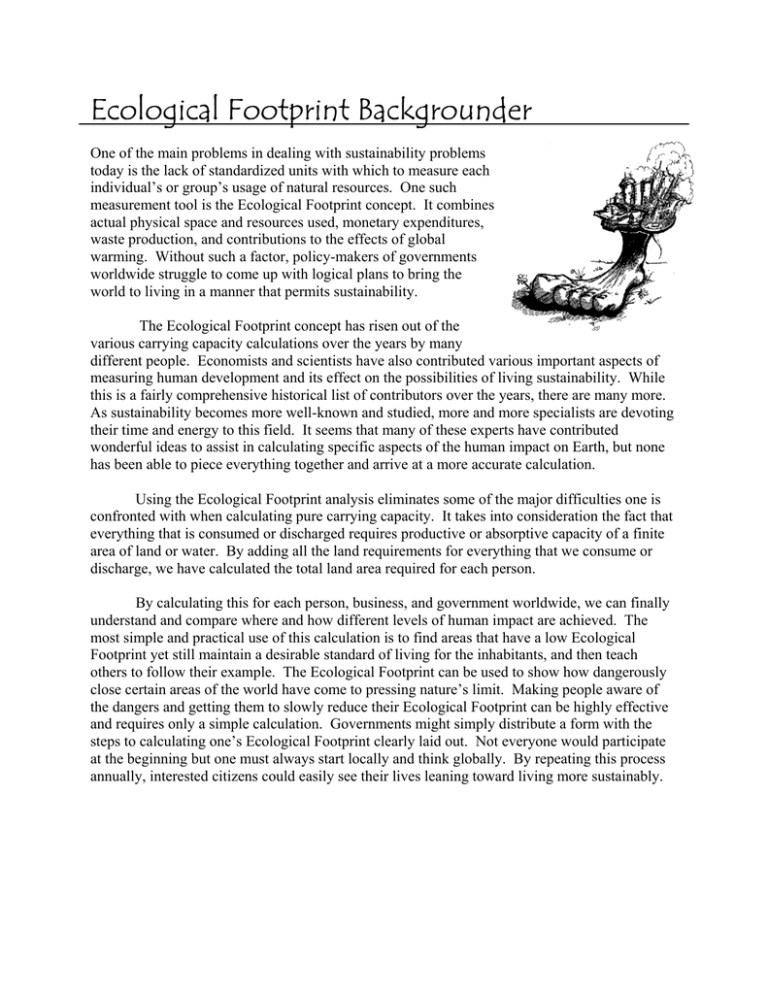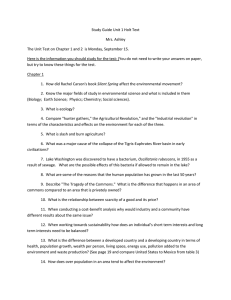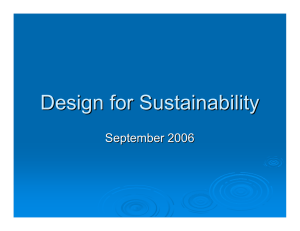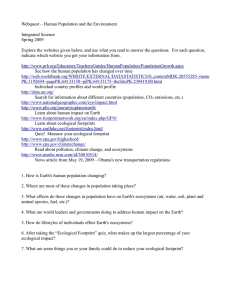Ecological Footprint Backgrounder
advertisement

Ecological Footprint Backgrounder One of the main problems in dealing with sustainability problems today is the lack of standardized units with which to measure each individual’s or group’s usage of natural resources. One such measurement tool is the Ecological Footprint concept. It combines actual physical space and resources used, monetary expenditures, waste production, and contributions to the effects of global warming. Without such a factor, policy-makers of governments worldwide struggle to come up with logical plans to bring the world to living in a manner that permits sustainability. The Ecological Footprint concept has risen out of the various carrying capacity calculations over the years by many different people. Economists and scientists have also contributed various important aspects of measuring human development and its effect on the possibilities of living sustainability. While this is a fairly comprehensive historical list of contributors over the years, there are many more. As sustainability becomes more well-known and studied, more and more specialists are devoting their time and energy to this field. It seems that many of these experts have contributed wonderful ideas to assist in calculating specific aspects of the human impact on Earth, but none has been able to piece everything together and arrive at a more accurate calculation. Using the Ecological Footprint analysis eliminates some of the major difficulties one is confronted with when calculating pure carrying capacity. It takes into consideration the fact that everything that is consumed or discharged requires productive or absorptive capacity of a finite area of land or water. By adding all the land requirements for everything that we consume or discharge, we have calculated the total land area required for each person. By calculating this for each person, business, and government worldwide, we can finally understand and compare where and how different levels of human impact are achieved. The most simple and practical use of this calculation is to find areas that have a low Ecological Footprint yet still maintain a desirable standard of living for the inhabitants, and then teach others to follow their example. The Ecological Footprint can be used to show how dangerously close certain areas of the world have come to pressing nature’s limit. Making people aware of the dangers and getting them to slowly reduce their Ecological Footprint can be highly effective and requires only a simple calculation. Governments might simply distribute a form with the steps to calculating one’s Ecological Footprint clearly laid out. Not everyone would participate at the beginning but one must always start locally and think globally. By repeating this process annually, interested citizens could easily see their lives leaning toward living more sustainably.




